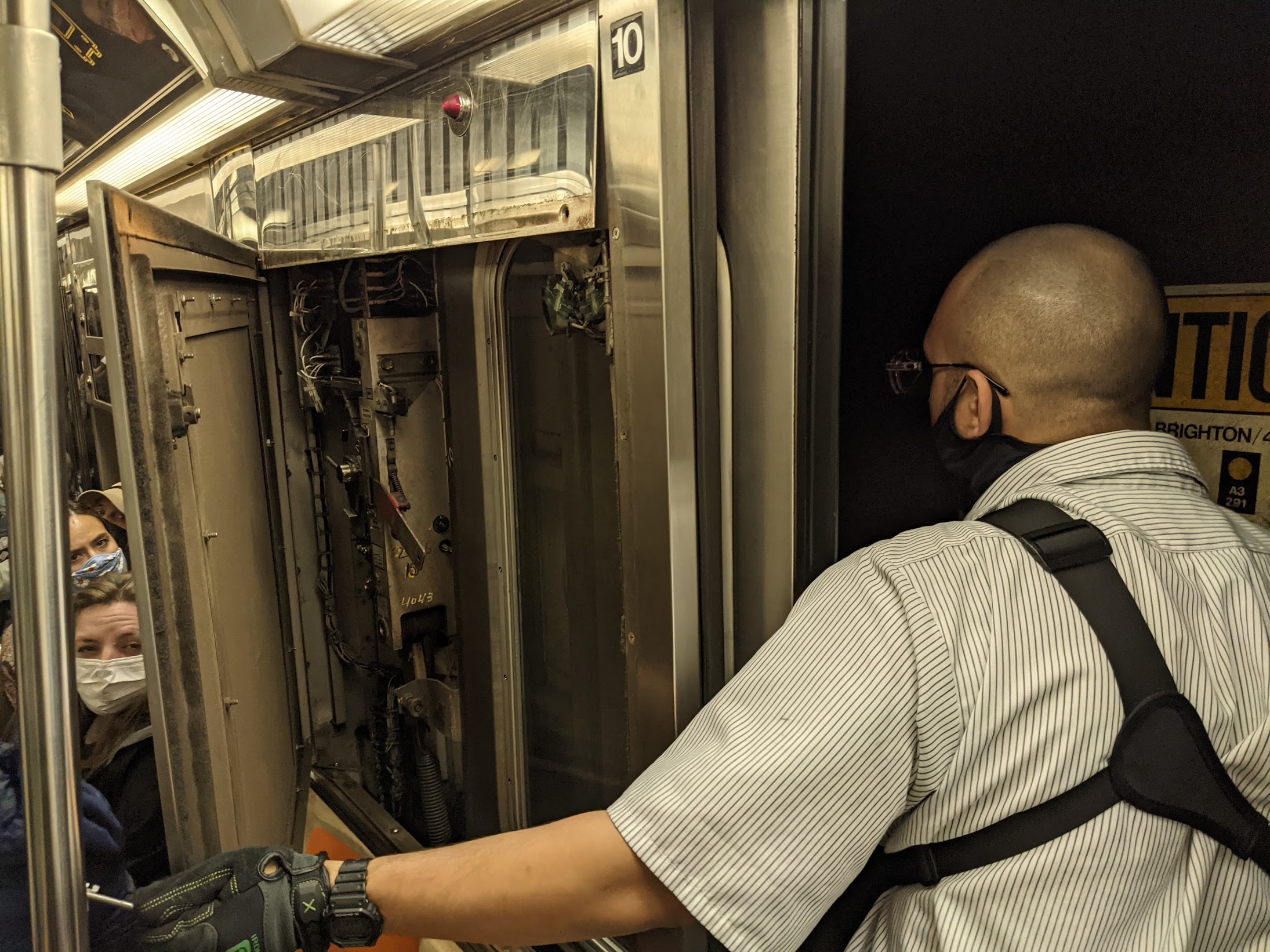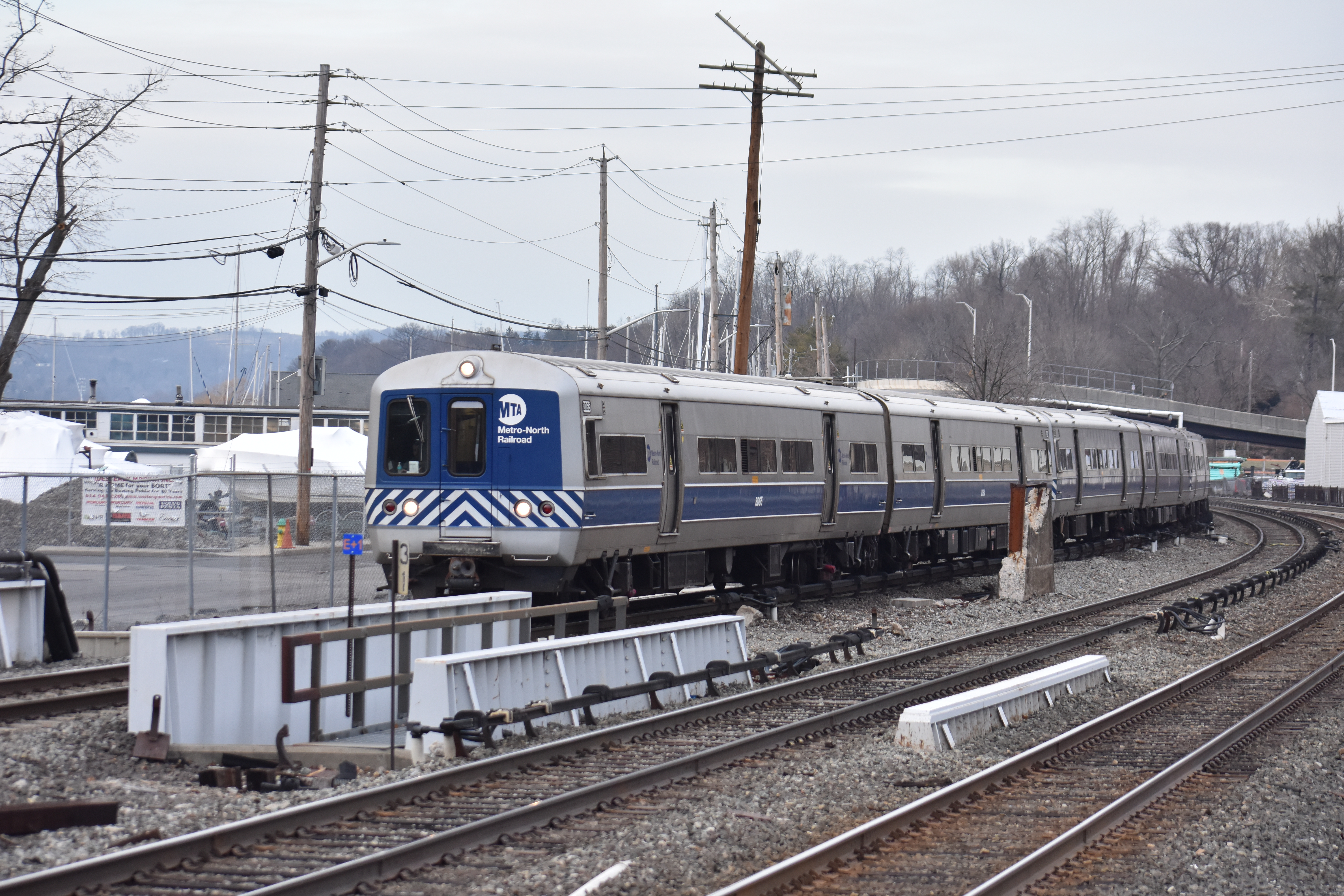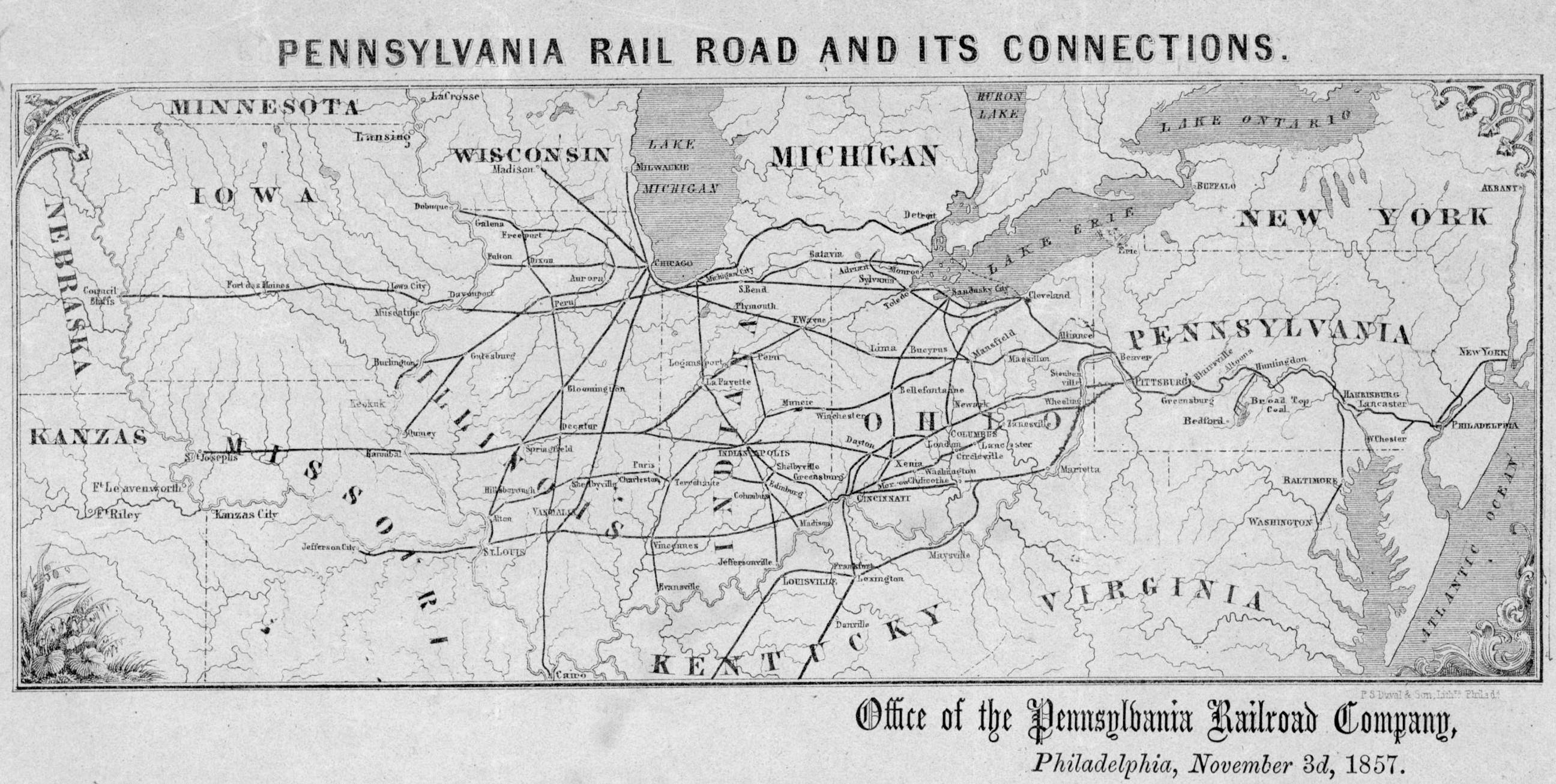|
Tuckahoe (Metro-North Station)
Tuckahoe station is a commuter rail stop on the Metro-North Railroad's Harlem Line, located in the village of Tuckahoe, New York. History The New York and Harlem Railroad laid tracks through Tuckahoe during the mid-1840s, and evidence of a station in Tuckahoe can be found at least as far back as the 1850s. The current Tuckahoe station building was originally built in 1901, by the New York Central Railroad, and was given an additional baggage elevator approximately in 1912. The station continued to serve commuters without much change until the New York Central merged with rival Pennsylvania Railroad to form Penn Central in 1968. As Penn Central was facing bankruptcy, the Metropolitan Transportation Authority began subsidizing service in 1970, and high-level platforms were constructed to accommodate the new M1A electric MU cars being delivered at the time. Operation of the railroad continued and was passed on to Conrail in 1976. Metro-North took over direct operation in 1983. ... [...More Info...] [...Related Items...] OR: [Wikipedia] [Google] [Baidu] |
Tuckahoe, Westchester County, New York
Tuckahoe is a village in Westchester County, New York, United States. One-and-a-half miles long and three-quarters of a mile wide, with the Bronx River serving as its western boundary, the Village of Tuckahoe is approximately sixteen miles north of midtown Manhattan in Southern Westchester County. As of the 2010 census, the village's population was 6,486. The village can be reached by the Metro-North railroad system. The Tuckahoe and Crestwood stations are 32 minutes and 34 minutes from New York City's Grand Central Terminal, respectively. History Industry and growth The name "Tuckahoe," meaning “it is globular," was a general term used by the Native Americans of the region when describing various bulbous roots which were used as food. Throughout the 1700s and 1800s, Tuckahoe was a rural, minor community which was part of the larger town of Eastchester. It was not until the early nineteenth century that Tuckahoe first became a semi-prominent part of the New York Metr ... [...More Info...] [...Related Items...] OR: [Wikipedia] [Google] [Baidu] |
Metropolitan Transportation Authority
The Metropolitan Transportation Authority (MTA) is a New York state public benefit corporations, public benefit corporation in New York (state), New York State responsible for public transportation in the New York metropolitan area, New York City metropolitan area. The MTA is the largest public transit authority in North America, serving 12 counties in Downstate New York, along with two counties in southwestern Connecticut under contract to the Connecticut Department of Transportation, carrying over 11 million passengers on an average weekday systemwide, and over 850,000 vehicles on its MTA Bridges and Tunnels, seven toll bridges and two tunnels per weekday. History Founding In February 1965, New York governor Nelson Rockefeller suggested that the New York State Legislature create an authority to purchase, operate, and modernize the Long Island Rail Road (LIRR). The LIRR, then a subsidiary of the Pennsylvania Railroad (PRR), had been operating under bankruptcy protection since 1 ... [...More Info...] [...Related Items...] OR: [Wikipedia] [Google] [Baidu] |
Railway Stations In The United States Opened In 1844
Rail transport (also known as train transport) is a means of transport using wheeled vehicles running in tracks, which usually consist of two parallel steel rails. Rail transport is one of the two primary means of land transport, next to road transport. It is used for about 8% of passenger and freight transport globally, thanks to its energy efficiency and potentially high speed.Rolling stock on rails generally encounters lower frictional resistance than rubber-tyred road vehicles, allowing rail cars to be coupled into longer trains. Power is usually provided by diesel or electric locomotives. While railway transport is capital-intensive and less flexible than road transport, it can carry heavy loads of passengers and cargo with greater energy efficiency and safety. Precursors of railways driven by human or animal power have existed since antiquity, but modern rail transport began with the invention of the steam locomotive in the United Kingdom at the beginning of the 19th ... [...More Info...] [...Related Items...] OR: [Wikipedia] [Google] [Baidu] |
Former New York Central Railroad Stations
A former is an object, such as a template, gauge or cutting die, which is used to form something such as a boat's hull. Typically, a former gives shape to a structure that may have complex curvature. A former may become an integral part of the finished structure, as in an aircraft fuselage, or it may be removable, being used in the construction process and then discarded or re-used. Aircraft formers Formers are used in the construction of aircraft fuselage, of which a typical fuselage has a series from the nose cone to the empennage, typically perpendicular to the longitudinal axis of the aircraft. The primary purpose of formers is to establish the shape of the fuselage and reduce the column length of stringers to prevent instability. Formers are typically attached to longerons, which support the skin of the aircraft. The "former-and-longeron" technique (also called stations and stringers) was adopted from boat construction, and was typical of light aircraft built until t ... [...More Info...] [...Related Items...] OR: [Wikipedia] [Google] [Baidu] |
Metro-North Railroad Stations In New York (state)
The Metro-North Commuter Railroad Company , also branded as MTA Metro-North Railroad and commonly called simply Metro-North, is a suburban commuter rail service operated by the Metropolitan Transportation Authority (MTA), a public authority of the U.S. state of New York. Metro-North serves the New York Metropolitan Area, running service between New York City and its northern suburbs in New York and Connecticut, including Port Jervis, Spring Valley, Poughkeepsie, Yonkers, New Rochelle, Mount Vernon, White Plains, Southeast and Wassaic in New York and Stamford, New Canaan, Danbury, Bridgeport, Waterbury, and New Haven in Connecticut. Service in Connecticut is operated under contract with the Connecticut Department of Transportation. Similarly, service on lines west of the Hudson River is operated under contract with NJ Transit. Metro-North also provides local rail service within the New York City boroughs of Manhattan and the Bronx. Metro-North is the descendant of c ... [...More Info...] [...Related Items...] OR: [Wikipedia] [Google] [Baidu] |
Crestwood (Metro-North Station)
Crestwood station is a commuter rail stop on the Metro-North Railroad's Harlem Line, serving the communities of Tuckahoe, Yonkers, and Eastchester, New York. Because of its location at the northern end of the triple-track segment of the Harlem Line, Crestwood is often the first/last stop outside New York City on Harlem Line express trains, and its center island platform is frequently used to short turn local trains during rush hour. The Harlem Line has two stations in the village of Tuckahoe. Tuckahoe station, the next station heading southbound, is located near Tuckahoe Village Hall, while Crestwood is located near the adjoining residential neighborhood of Crestwood, Yonkers. As of August 2006, daily commuter ridership was 1,596, and there are 283 parking spots. History Originally built by the New York Central Railroad sometime in 1901, the station's canopy was rebuilt in 1911, then faced a major redesign in 1928. The Crestwood railroad station is depicted in the painting ... [...More Info...] [...Related Items...] OR: [Wikipedia] [Google] [Baidu] |
Bronxville (Metro-North Station)
Bronxville station is a commuter rail stop on the Metro-North Railroad's Harlem Line, located in the village of Bronxville, New York, in Westchester County. History The New York and Harlem Railroad laid tracks through Bronxville during the mid-1840s, and evidence of a station in Bronxville can be found at least as far back as 1858. A second station was built in 1893 by the New York Central and Hudson River Railroad, replacing a previous station which was also the home of Lancaster Underhill, a descendant of John Underhill, the man responsible for creating "Underhill's Crossing". The third and current Bronxville Station was built in 1916 by the New York Central Railroad, in the Spanish-Mission Revival architecture designed to match that of the nearby Gramatan Hotel. As with the rest of the Harlem Line, the merger of New York Central with Pennsylvania Railroad in 1968 transformed it into a Penn Central station, and then its service was gradually merged with the Metropolitan ... [...More Info...] [...Related Items...] OR: [Wikipedia] [Google] [Baidu] |
Fleetwood (Metro-North Station)
Fleetwood station is a commuter rail stop on the Metro-North Railroad's Harlem Line, located in the Fleetwood section of Mount Vernon, New York. As of August 2006, daily commuter ridership was 2,355 and there are 654 parking spots. History Fleetwood station was originally built on October 25, 1924 by the New York Central Railroad. The Cross County Parkway was built over the station, and was widened during the 1950s and 1960s. As with the rest of the Harlem Line, the merger of New York Central with Pennsylvania Railroad in 1968 transformed it into a Penn Central station, whose service was gradually merged with the Metropolitan Transportation Authority, and officially became part of Metro-North in 1983. In the Spring of 1989, the platforms were reconstructed, along with those of Bronxville (Metro-North station), Bronxville, Tuckahoe (Metro-North station), Tuckahoe, and Crestwood (Metro-North station), Crestwood stations. A two-track girder bridge over the Bronx River can be found ... [...More Info...] [...Related Items...] OR: [Wikipedia] [Google] [Baidu] |
Conrail
Conrail , formally the Consolidated Rail Corporation, was the primary Class I railroad in the Northeastern United States between 1976 and 1999. The trade name Conrail is a portmanteau based on the company's legal name. It continues to do business as an asset management and network services provider in three Shared Assets Areas that were excluded from the division of its operations during its acquisition by CSX Corporation and the Norfolk Southern Railway. The federal government created Conrail to take over the potentially profitable lines of multiple bankrupt carriers, including the Penn Central Transportation Company and Erie Lackawanna Railway. After railroad regulations were lifted by the 4R Act and the Staggers Act, Conrail began to turn a profit in the 1980s and was privatized in 1987. The two remaining Class I railroads in the East, CSX Transportation and the Norfolk Southern Railway (NS), agreed in 1997 to acquire the system and split it into two roughly-equal parts ... [...More Info...] [...Related Items...] OR: [Wikipedia] [Google] [Baidu] |
M1A (railcar)
The M1 and M3 are two similar series of electric multiple unit rail cars built by the Budd Company for the Long Island Rail Road, the Metro-North Railroad, and Metro-North's predecessors, Penn Central and Conrail. Originally branded by Budd as Metropolitans, the cars are more popularly known under their model names, M1 (late 1960s/early 1970s cars) and M3 (mid-1980s cars). The Metro-North cars were branded under the M1A and M3A series. Overview Even though the LIRR's fleet of some 900 MP54 electric MU cars constructed between 1908 and 1930 had been augmented between 1955 and 1963 by about 150 newer MP72 and MP75 EMUs, the roster still contained a large number of increasingly elderly pre-war cars, which the cash-strapped LIRR was unable to replace. In 1965, the nearly bankrupt commuter railroad was taken over by the state-owned Metropolitan Commuter Transportation Authority (later renamed the Metropolitan Transportation Authority in 1968), which was then able to provide large ... [...More Info...] [...Related Items...] OR: [Wikipedia] [Google] [Baidu] |
Pennsylvania Railroad
The Pennsylvania Railroad ( reporting mark PRR), legal name as the Pennsylvania Railroad Company, also known as the "Pennsy," was an American Class I railroad that was established in 1846 and headquartered in Philadelphia, Pennsylvania. At its peak in 1882, the Pennsylvania Railroad was the largest railroad (by traffic and revenue), the largest transportation enterprise, and the largest corporation in the world. Over its existence, Pennsylvania Railroad acquired, merged with, or owned part of at least 800 other rail lines and companies. At the end of 1926, it operated of rail line;This mileage includes companies independently operated. PRR miles of all tracks, which includes first (or main), second, third, fourth, and sidings, totalled 28,040.49 at the end of 1926. in the 1920s, it carried nearly three times the traffic as other railroads of comparable length, such as the Union Pacific and Atchison, Topeka & Santa Fe railroads. Its only formidable rival was the New York Centra ... [...More Info...] [...Related Items...] OR: [Wikipedia] [Google] [Baidu] |






